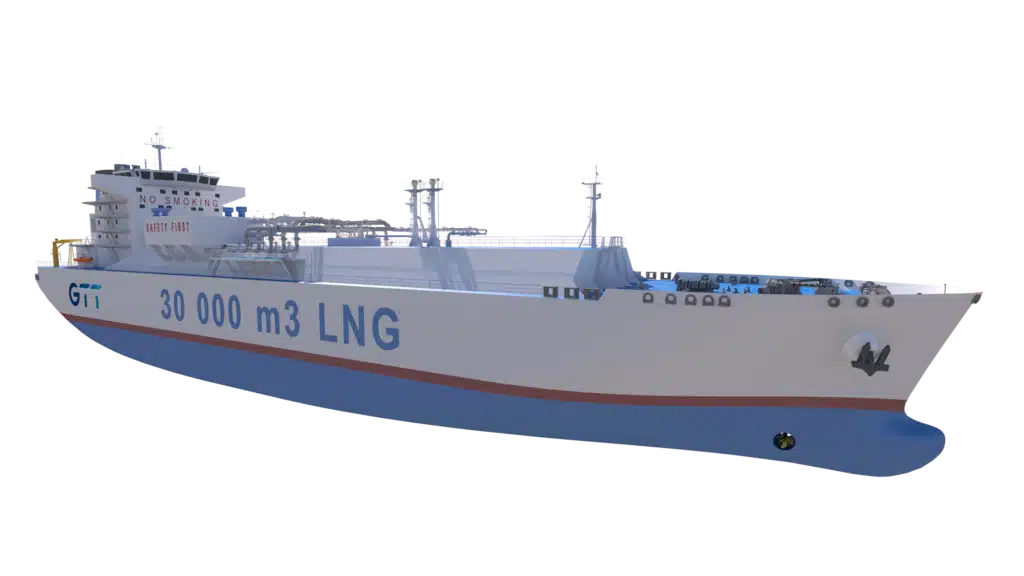ClassNK issues approval in principle (AiP) for new membrane-type LNG carrier without filling limits
- for the 30,000 m³ LNG carrier developed by GTT -

Tokyo, Japan – ClassNK, a well-known ship classification society, has granted Approval in Principle (AiP) to a new LNG (Liquefied Natural Gas) carrier developed by GTT. This carrier, designed with a 30,000 m³ capacity, uses two advanced Mark III Flex membrane tanks. The vessel’s innovative ballast tank design offers more flexibility during operations, making it safer and more efficient.
Traditionally, LNG carriers with membrane tanks face challenges with sloshing, which happens when liquid inside the tank moves too much. To manage this, limits are often placed on how much cargo can be carried at a time. But the new design from GTT aims to solve this problem, giving operators more freedom to carry different cargo levels without worrying about sloshing.
How the New Ballast System Works
The ballast tanks on this LNG carrier are divided into upper and lower sections. During operation, water is first pumped into the upper ballast tanks. This technique keeps the ship’s metacentric height (GM) low, which stabilizes the vessel and reduces rolling movements. By doing so, the design ensures there is less sloshing inside the cargo tanks, even if the tanks are partially filled. This flexibility helps operators avoid strict filling limits, making transportation smoother and safer.
GTT to Design Tanks for New LNG Bunkering Vessel Ordered by Hudong-Zhonghua Shipbuilding
What Approval in Principle (AiP) Means
ClassNK carefully reviewed the vessel design according to international rules like the IGC Code and its own steel ship construction guidelines. After ensuring that the ship met all safety and operational requirements, ClassNK issued the AiP. This approval confirms that the vessel concept is feasible and meets necessary standards. It also sets specific guidelines for shipbuilders and operators to follow during construction and operation.
An Approval in Principle (AiP) is usually given during the early design stage of a ship, long before it is built. This approval ensures that the ship design follows current international regulations and avoids delays later in the construction process. By getting an AiP, ship designers can save time and demonstrate that their designs meet safety standards.
ClassNK’s Ongoing Efforts to Promote Innovation
ClassNK is committed to supporting new technologies in the maritime industry. Through safety assessments like the AiP, the organization helps shipbuilders develop better and safer ships. As technology evolves, ClassNK will continue to provide guidance to ensure these new concepts are safe and meet global standards.
